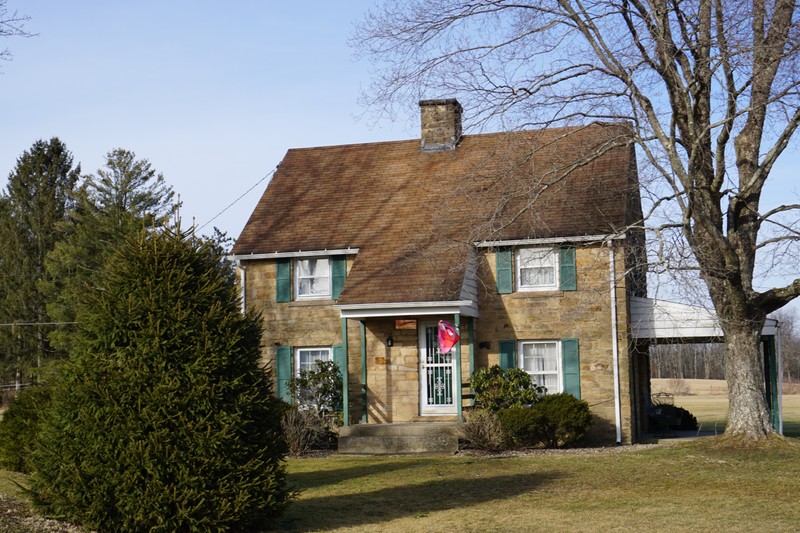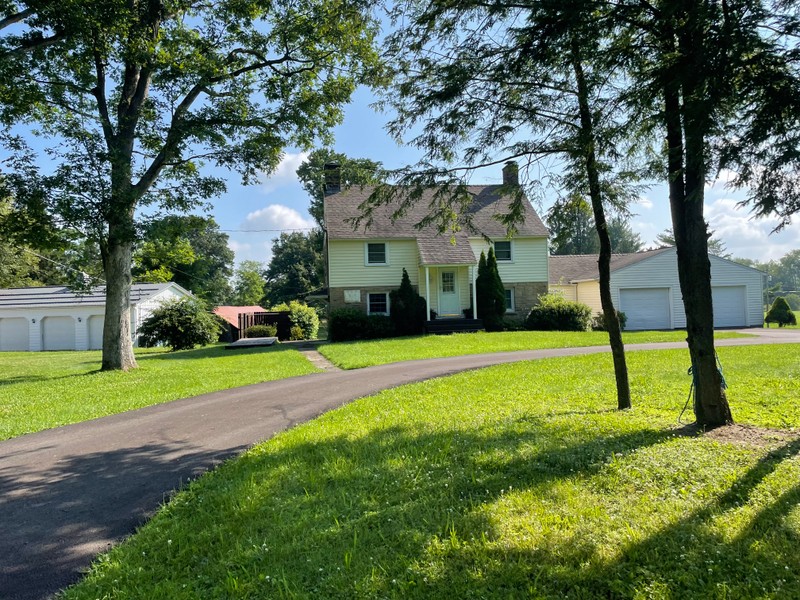BB-2 and BB-3 Teachers' Stone Houses*
Introduction
Text-to-speech Audio
These two stone houses were occupied by Arthurdale teachers. They paid about $25 rent, which was more than the homesteaders, and were not expected to farm. However, they were expected to be involved in the daily life of the community, to help with making plans and solving problems. Many teachers originally came from Kentucky, and teachers from West Virginia arrived later.
Images
BB-3 Today

BB-2 Today

Backstory and Context
Text-to-speech Audio
In the words of school administrator Elsie Ripley Clapp, “What the children studied at school their mothers and fathers also were learning, and what their parents learned and did taught the children. And we, the teachers, learned both from them and with them, for homesteading and building a village community were new to us too.”
The Arthurdale schools opened before the facilities were entirely ready, and teachers lacked textbooks and materials. This meant then that the Arthurdale teachers had to develop their own curriculum and learning experiences, but the first teachers who arrived from Kentucky and were trained in the progressive education model welcomed the challenge and found ways to adapt to it. Children studied subjects that were relevant to them such as farming while also engaging in “block play” which was meant to develop critical thinking and sensory-based learning theory as the children constructed their own buildings. Traditional subjects like reading and math were incorporated into these hands-on versions of education.
West Virginia teachers were late arriving to Arthurdale and, as they did not have the same training as the Kentucky teachers, they had to learn the progressive education model as they taught it. This proved stressful for some of the teachers, like Sara Liston who remembered that “At some of the conferences [organized by Elsie Ripley Clapp] , for instance, she wanted us to take a problem child and study that child, and study far enough along that with readings, we would learn to cope with that child in ways best for his advantage and ours. We had to keep a report on that child and then she [Clapp] would ask for a written report on results…we had to study John Dewey’s methods. She wanted to know if we were understanding and applying them” (Stack 76). Despite the difficult transition, the teachers appreciated the experience of working with the Arthurdale schools, and Clapp praised Sara Liston in particular as “an outstanding teacher.”
The teachers also maintained that the community involvement with the school was important to the success of education in Arthurdale as it formed a connection between the school and students’ parents. Teacher Inez Funk stated that she learned a great deal from her experience in Arthurdale and would not trade it for anything.
Sources
Arthurdale Heritage, Preserving Arthurdale, WV – Eleanor Roosevelt's New Deal Community. Arthurdale Heritage Inc.. Accessed March 20, 2017. http://www.arthurdaleheritage.org/.
Haid, Stephen Edward. "Arthurdale: An Experiment in Community Planning, 1933-1947." Master's thesis, West Virginia University, 1975.
Maloney, C. J. Back to the Land: Arthurdale, FDRs New Deal, and the Costs of Economic Planning. John Wiley & Sons, 2013.
Patterson, Stuart. “A New Pattern of Life: The Public Past and Present of Two New Deal Communities.” Doctoral Thesis, Emory University, 2006.
Penix, Amanda Griffith. Images of America: Arthurdale. Arcadia Publishing, 2007.
Stack, Sam. "The Arthurdale Community School." University Press of Kentucky, 2020.
Ward, Bryan. A New Deal for America. Arthurdale Heritage Inc., 1995
